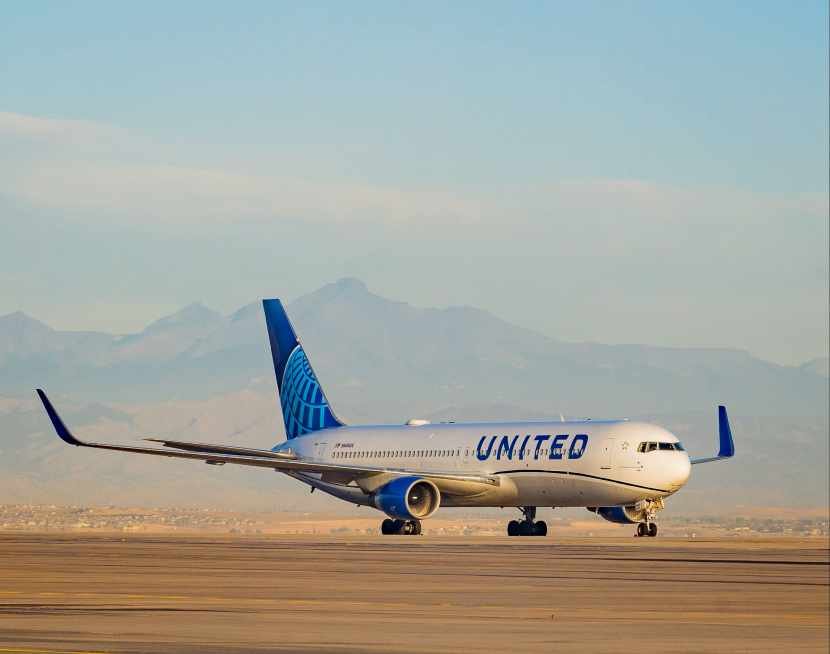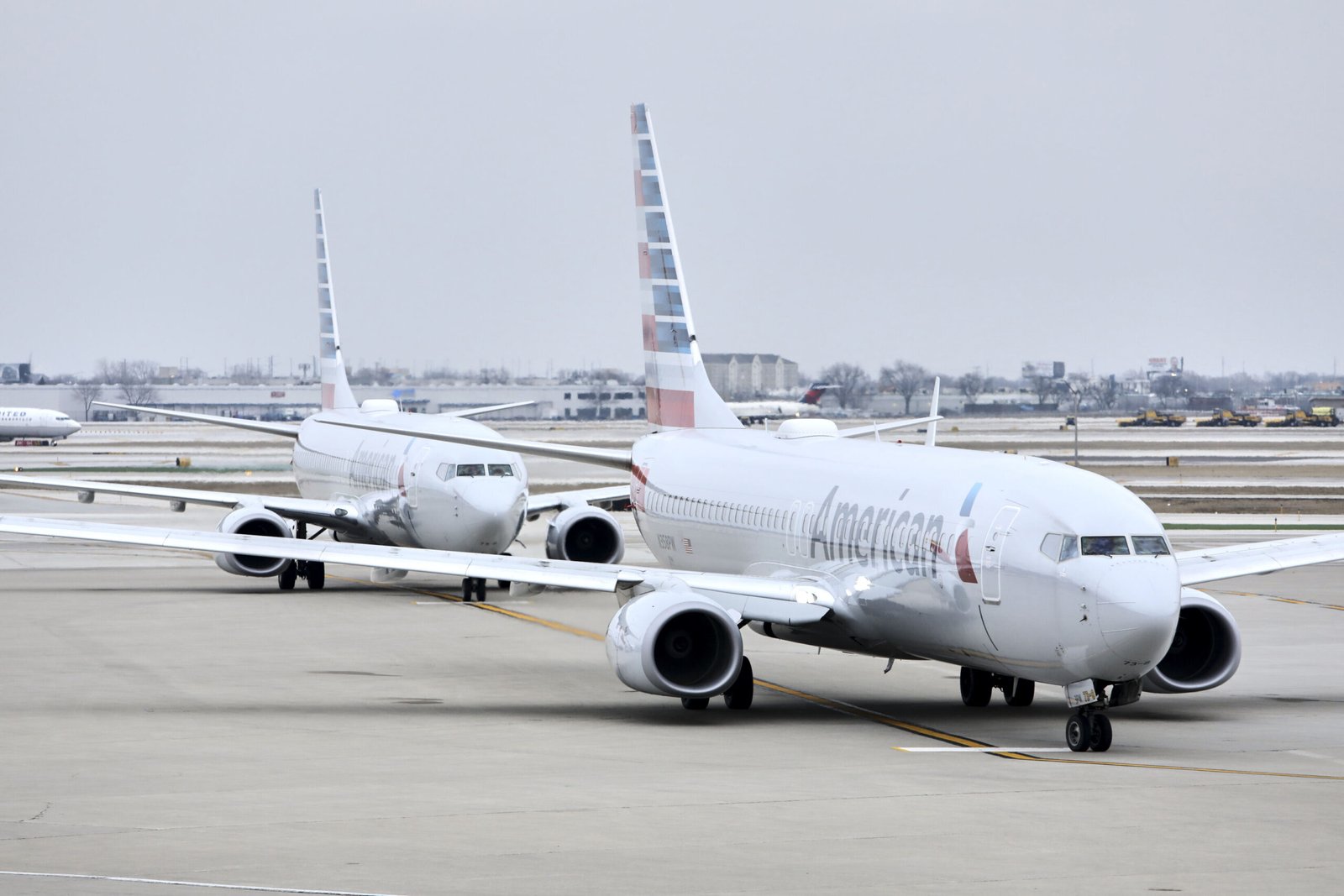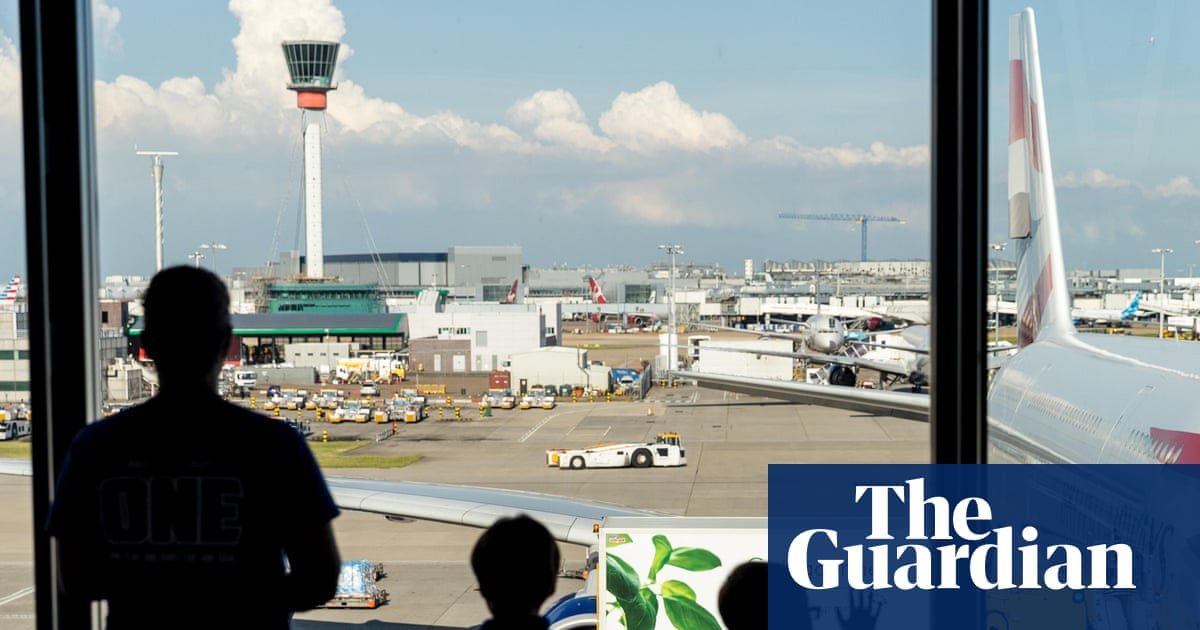Flight Buzz
United Airlines Reshapes Summer Travel: Fewer Flights, New Focus On High Demand Destinations For U.S. Travelers: What You Need To Know

Tuesday, July 29, 2025
Image Credit: www.united.com
As the travel industry continues to adjust to fluctuating demand, United Airlines has made the decision to reduce its domestic flight capacity by up to 4% through the third quarter of 2025. This reduction, which will impact flights between July and September, follows the airline’s recent earnings report, which showed a modest increase in revenue but a less optimistic outlook for the remainder of the year.
In light of weaker-than-expected demand, especially from price-sensitive travelers, United Airlines is adjusting its operations to focus on more profitable routes and times. This is a strategic move to align the airline’s capacity with the changing dynamics of travel demand, as consumers continue to be cautious about discretionary spending due to inflation and economic uncertainties.
For travelers, these changes mean that certain flights, particularly those during off-peak hours, will be canceled. While United has not disclosed specific airports or routes that will be affected, it is expected that smaller airports with lower traffic volumes will see the most reductions. This news comes amid broader changes in the airline industry, with other major carriers, including American Airlines, Southwest, and JetBlue, also making adjustments to their flight schedules in response to the current economic climate.
United Airlines’ Revenue Growth and Adjusted Expectations
United Airlines’ second-quarter earnings for 2025 reported a 1.7% year-over-year increase in revenue, totaling $15.24 billion. While this increase is positive, it fell slightly short of analysts’ expectations, which had forecasted $15.35 billion. Despite this, the airline expressed confidence in its ability to finish the year strong, projecting earnings between $9 and $11 per share for the full year, a decrease from earlier estimates of $11.50 to $13.50 per share.
CEO Scott Kirby highlighted that the airline’s outlook for the second half of the year is more optimistic than it was in the first quarter, driven by improved visibility and confidence in stronger travel demand as the year progresses. Kirby attributed the weaker-than-expected first-quarter performance to softer demand from budget-conscious consumers who are more hesitant to travel amid ongoing inflation and economic uncertainty. While the overall mood at United Airlines is cautiously optimistic, the airline’s decision to reduce domestic flights reflects the realities of the current market conditions.
Impact on Domestic Flights and the Airline’s Strategy
The decision to cut 4% of United Airlines’ domestic flight capacity is a response to decreased demand, particularly on off-peak flights. This reduction will mostly affect flights during early mornings, late evenings, and weekdays, rather than the more popular weekend flights. Additionally, smaller airports with lower passenger traffic are likely to experience the largest service reductions, as these routes often struggle to remain profitable during times of low demand.
For passengers, this means that some flights they were relying on may be canceled, especially those flying during non-peak hours or from smaller regional airports. While this reduction in flight capacity is not unprecedented, it underscores the ongoing challenges faced by the airline industry as it navigates the economic uncertainties of 2025. Travelers should be prepared for potential disruptions, especially if they have booked flights during times typically impacted by capacity cuts.
In addition to these changes, United Airlines has emphasized its focus on more profitable routes and times. As part of its broader strategy, the airline is prioritizing higher-demand flights and destinations, which could lead to more frequent cancellations or reductions in service on certain routes that historically struggle with lower occupancy.
Industry-Wide Changes: United Airlines Isn’t Alone in Reducing Flight Capacity
United Airlines’ move to reduce its domestic flight capacity is part of a broader trend in the airline industry, where several major carriers have made similar adjustments in response to changing travel patterns and consumer behavior. American Airlines, for instance, has cut hundreds of flights from its schedule, particularly from Chicago O’Hare to destinations like Dallas/Fort Worth, Wilmington, and El Paso International Airport. These cuts were announced earlier this year, highlighting the growing trend of airlines scaling back their operations.
Similarly, Southwest Airlines has reduced its flight capacity for the summer months, canceling hundreds of flights to destinations like San Jose, San Diego, and Portland. Even JetBlue has made the decision to cease operations to Miami Airport entirely. These moves, though concerning for passengers, reflect the airlines’ efforts to align their flight schedules with market realities. Price-conscious consumers have shown reduced eagerness to travel, with many avoiding expensive or unnecessary trips due to ongoing inflation, rising travel costs, and concerns about economic stability.
The reduction in flights across multiple carriers signals that the airline industry is adjusting to a shift in consumer behavior, where discretionary spending on travel is becoming more selective. With many travelers seeking more affordable options, airlines are adapting their strategies to focus on the routes and times that generate the most demand.
What Travelers Can Expect and How to Prepare
For those planning to travel with United Airlines this summer, it’s important to be aware of potential disruptions in flight schedules. Travelers should double-check their bookings to ensure their flights are not impacted by the capacity cuts. In addition, passengers should be prepared for the possibility of changes to flight times or cancellations, particularly if they are flying during off-peak hours or from smaller airports.
United Airlines has encouraged travelers to stay flexible and make alternative arrangements if their flights are canceled or changed. The airline’s customer service teams are available to assist with rebooking or providing other options. Additionally, it’s always a good idea to sign up for flight notifications and alerts to stay updated on any changes to flight schedules.
While the reduction in flight capacity may seem like a step backward for the airline, it is ultimately a strategic move to ensure that United Airlines remains financially stable and responsive to market conditions. By focusing on profitable routes and maintaining flexibility in its operations, United Airlines is positioning itself to better serve customers in the long term.
Conclusion: Navigating the Changing Landscape of Air Travel
United Airlines’ decision to cut 4% of its domestic flights highlights the ongoing challenges faced by the airline industry in 2025. As demand for air travel fluctuates and consumers become more price-sensitive, airlines are making necessary adjustments to align with the current economic climate. For travelers, this means being proactive in checking flight schedules and being prepared for potential disruptions.
Despite the adjustments to its flight schedule, United Airlines remains optimistic about its prospects for the remainder of the year. With a strategic focus on high-demand routes and times, the airline aims to weather the current economic uncertainty and continue to provide valuable service to its passengers. By staying flexible and informed, travelers can navigate these changes and ensure their summer trips go as smoothly as possible.
Flight Buzz
Spirit Airlines Launches New Flights to the Caribbean and Central America—With Deals From $66

- Spirit Airlines announced new flights to Belize and the Cayman Islands.
- Both routes will operate three times per week from Fort Lauderdale, FL, this winter.
- The airline is celebrating the new routes with introductory fares as low as $66.
Low-cost carrier Spirit Airlines is expanding its network to warm-weather destinations, making jetting off to a tropical beach vacation easier.
Starting Nov. 21, Spirit will launch flights from the Fort Lauderdale-Hollywood International Airport (FLL) to Belize’s Philip S.W. Goldson International Airport (BZE) three times per week. Then on Dec. 4, the carrier will start flying three times per week between Fort Lauderdale and the Owen Roberts International Airport (GCM) in Grand Cayman on the Cayman Islands.
And best of all, Spirit is celebrating both route announcements with deals starting as low as $66 one-way.
“This is a win for travelers across our network, who are gaining more access to top destinations in the Caribbean and Latin America as we continue to expand service from Fort Lauderdale,” John Kirby, Spirit Airlines’ vice president of network planning, said in a statement shared with Travel + Leisure.
The new flights to Belize, which will operate Mondays, Fridays, and Saturday and start at $85 one-way, welcome travelers to explore the beautiful country, home to a variety of cultural, historical, and outdoor activities. Popular attractions include the Swallow Caye Wildlife Sanctuary, St. Johns Cathedral, along with action-packed zipline courses and rainforest hikes, according to Belize Tourism.
Travelers looking to explore the Cayman Islands can expect white, sandy beaches, crystal-clear water, incredible snorkeling opportunities (including around a shipwreck), and even the chance to discover Caymanian art at the National Gallery of the Cayman Islands. The islands are also home to several special events, including the Cayman Islands Rum Festival and the Cayman Islands Marathon in December, according to Cayman Tourism. These new flights will operate on Thursdays, Saturdays, and Sundays, and start at $66 one-way.
These aren’t the only new routes Spirit is planning. In November, the airline also plans to start flying between Fort Lauderdale and Key West, significantly undercutting the time it takes to get there by car with a 50 minute flight rather than 4 hour or more drive.
Each of the new flights will feature Spirit’s version of first class, which boasts an included carry-on and checked bag, reserved overhead bin space, complimentary snacks and drinks, access to Wi-Fi, and more. Travelers will also be able to book premium economy seats, which come with extra legroom or a blocked middle seat. Additionally, the flights will feature Spirit’s “Value” seats in which passengers must pay extra for things like seat selection and carry-on bags.
Flight Buzz
Hungary joins Czech Republic, Greece, Italy, Switzerland, USA, Argentina and Japan as American Airlines launches new direct flights creating scenic, culinary and heritage tourism corridors for global travelers

Published on
August 8, 2025 |
In a major move poised to reshape summer travel patterns, American Airlines today announced the launch of six exciting new international nonstop routes for summer 2026, connecting the U.S. more closely with Central Europe, Southern Europe, and South America. Departures from Philadelphia (PHL), Dallas–Fort Worth (DFW), and Miami (MIA) will deliver seamless, high-comfort service to Budapest, Prague, Athens, Milan, Zurich, and expanded service to Buenos Aires. For discerning travelers, this means enhanced connectivity, premium experiences, and new cultural gateways opening up across continents.
From May through August 2026, passengers can look forward to premium widebody cabins, complete with mattress pads, multicourse meals, award-winning wines, and even pajamas on long-haul Asian flights—reflecting American Airlines’ commitment to elevated service. Central European aficionados now have direct access to the historic charms of Budapest and Prague via daily 787-8 Dreamliners out of Philadelphia. Meanwhile, Southern European flair beckons with daily flights to Athens and Zurich from Dallas, alongside a year-round Miami–Milan connection. And for travelers venturing south, the airline is extending its seasonal service to Buenos Aires, offering increased frequencies during the peak summer months.
This strategic expansion not only reinforces American’s transatlantic dominance but also positions the airline as a leader in premium leisure travel, especially in Central and Southern Europe. The addition of multiple daily flights, advanced lounges, and flexible routing—for example, fly-into one city and return via another—caters to modern itinerary preferences. Whether for cultural exploration, business, or sporting events, these routes offer a compelling blend of comfort, choice, and connectivity.
1. Central Europe: Philadelphia to Budapest and Prague
- Route Launch: Daily nonstop flights from Philadelphia (PHL) to Budapest (BUD) and Prague (PRG) begin May 21, 2026.
- Aircraft: Boeing 787-8 Dreamliner—comfortable, efficient, and ideal for transatlantic travel.
- Destination Appeal:
- Budapest: Thermal spas, iconic Danube panoramas, grand architecture.
- Prague: Medieval Old Town, Charles Bridge, rich cultural legacy.
- Strategic Value: These are American’s first-ever flights to Budapest, marking a bold step into Central Europe.
- Multi-city Flexibility: Travelers can conveniently fly into one city and return from the other—perfect for immersive regional journeys.
- Hub Amenities: Philadelphia’s newly renovated Flagship® Lounge and Admirals Club® offer premium dining, panoramic views, and seamless boarding experiences.
2. Southern Europe: Dallas–Fort Worth to Athens and Zurich; Miami to Milan
- Dallas–Fort Worth (DFW) to Athens (ATH):
- Daily seasonal service using 787-8.
- Becomes the fifth U.S. city with nonstop American service to Greece.
- DFW to Zurich (ZRH):
- Seasonal nonstop route operated by 777-200, running May 21 – August 4, 2026.
- The only nonstop connection between DFW and Zurich during this window.
- Miami (MIA) to Milan (MXP):
- Year-round daily service launching March 29, 2026 on widebody aircraft.
- Strengthens Miami’s longstanding position as American’s largest hub.
- Complements existing Miami–Rome service, increasing U.S.–Italy connectivity.
- Aggregate Impact: Summer 2026 will see 18 daily American flights to Italy and Greece combined, signifying record network depth.
3. South America: Extended Miami and Dallas Service to Buenos Aires
- Service Extension: Dallas–Fort Worth (DFW) to Buenos Aires (EZE) extended seasonally May 21 – August 3, 2026.
- Miami (MIA) to Buenos Aires (EZE):
- Experienced a summer service ramp-up, with up to three daily nonstop flights during peak travel.
- Travel Appeal: This expansion caters to leisure, cultural, and family travelers capitalizing on summer in the Southern Hemisphere, while also supporting major sporting events ahead of international competitions.
4. Premium Enhancements to Asia: Focus on Tokyo Haneda
- Dallas–Fort Worth (DFW): Daily 777-300ER service to Tokyo Haneda (HND) begins March 29, 2026.
- Los Angeles (LAX): Increases to twice-daily 777-200 flights.
- Premium Capacity Growth: Compared to summer 2025, American Airlines is boosting premium cabin seating to Tokyo by over 45%, elevating comfort, space, and service quality.
- Onboard Luxury: All long-haul widebody flights to Asia—Tokyo and beyond—will feature premium amenities including pajamas, mattress pads, multicourse meals, and award-winning wine selections.
Strategic Highlights & Travel Insights
- Unprecedented U.S.–Central Europe Access: Philadelphia’s additions of Budapest and Prague represent new territory for American Airlines.
- Southern Europe & Middle East Stronghold: Expanded service to Athens, Milan, and Zurich cements American’s leadership across key lifestyle and business routes.
- South American Growth: Increased Buenos Aires service meets rising demand while supporting seasonal and event-driven travel.
- Premium Travel Differentiation: Focused on high-value, comfort-oriented service—sleep options, luxury meals, and curated wine programs.
- Hub Optimization: PHL, DFW, and MIA remain strategic departure points, each with enhanced lounges and transit options for globetrotters.
Bullet Points at a Glance
- Six new nonstop routes for summer 2026
- PHL → Budapest (BUD) – daily using 787-8
- PHL → Prague (PRG) – daily using 787-8
- DFW → Athens (ATH) – daily seasonal, 787-8
- DFW → Zurich (ZRH) – seasonal, 777-200
- MIA → Milan (MXP) – year-round daily, widebody
- DFW and MIA → Buenos Aires (EZE) – extended summer schedules
- Premium enhancements: pajamas, mattress pads, multicourse meals, award-winning wine on all long-haul widebody flights to Asia.
- Tokyo Haneda service expansion: DFW adds daily 777-300ER; LAX increases to twice-daily 777-200.
- Broader U.S.–Europe connectivity: 18 daily American flights to Italy and Greece.
- Hub benefits: upgraded lounges, streamlined service, ideal for multi-city itineraries.
Conclusion
American Airlines bold summer 2026 international expansion marks a pivotal moment for global travel, enhancing U.S.-Europe and U.S.-South America ties while doubling down on premium comfort for long-haul flyers. Whether you’re exploring the thermal baths of Budapest, the ancient wonders of Athens, the fashion avenues of Milan, or the southern charm of Buenos Aires, these routes bring the world closer—on your schedule, in your style.
FAQs – American Airlines Summer 2026 International Routes
Q1: When do the new routes start operating?
Most new routes launch between March 29, 2026 and May 21, 2026, with seasonal services running until early August.
Q2: Which U.S. hubs will operate the new flights?
The primary hubs are Philadelphia (PHL), Dallas–Fort Worth (DFW), and Miami (MIA).
Q3: What aircraft will be used for these routes?
Routes will feature Boeing 787-8 Dreamliners, 777-200s, and 777-300ERs, all equipped with premium cabins.
Q4: Are the Budapest and Prague flights year-round?
No, they will operate as summer seasonal services from May to August.
Q5: Will there be premium cabin amenities?
Yes, long-haul widebody flights include pajamas, mattress pads, multicourse meals, and award-winning wines.
Q6: Can I book now?
Ticket sales for the new routes open August 11, 2025 on aa.com and the American Airlines app.
Flight Buzz
How a viral post led to Juurnee, a travel site matching passengers with helpers | Consumer affairs

It started as a cry for help that went viral. Rachel Crampton was facing a 23-hour flight with three children under the age of five. Unable to recruit a family member or friend to help out, she took to social media and offered a sizeable cash payment – A$1,000 (about £560 at the time) – to someone who would accompany her on the epic London-to-Sydney flight.
Crampton, a Briton based in Sydney, was inundated with responses and found an “amazing Aussie girl” living in London who was homesick but could not afford the flight back to Australia.
She has since turned that experience into a business which has just launched in the UK after success in Australia. Her website, Juurnee, matches those who want help on a flight with people willing to be their travel companion.
Those needing help could include a parent travelling solo with toddlers, an older person requiring some assistance, someone with a disability, an unaccompanied child, or a nervous flyer.
The companion receives a payment that will cover part, or all, of the cost of their flight.
At the time of writing there were 30 live requests for help on the site. These included a London-to-Switzerland return flight, where the full cost is offered to someone who can help an older passenger who uses a wheelchair; and a London-to-Sydney return trip, with 50% of the flight cost paid, for someone who can help a mother with her one-year-old (there is an option to help just one way).
Crampton says more than 12,000 people have signed up to be a companion and many are qualified teachers, nurses, midwives, childcare workers and others who have clearances to work with children, or qualifications to assist people with disabilities.
But she adds: “You don’t need to be a nanny or nurse – just a decent person willing to lend a hand.”
People seeking a companion can post their offer for free and don’t pay for a successful match. They list the route, the date, the flight details and the sum they are willing to pay someone to travel with them.
They can choose their own payment amount, although the website recommends 50% to 100% of a companion’s flight cost.
Companions sign up for free and can view the offers, but pay a £15-a-year subscription to be able to message people directly to offer their services. They buy their own flights, so, to that extent, the person who needs help is not responsible for them.
Once a companion has applied for an offer, the person requesting help has 14 days to accept and match with them. If selected, the companion will be put in touch with the individual needing help.
Crampton recommends companions get paid at the end of the trip, and that an escrow service is used to hold the payment from when the agreement is struck until 48 hours after landing. “At the moment we are recommending our matched travellers use Escrow.com,” she adds.
There is no official “contract” between the two parties provided by the site – for example, outlining what is expected of the companion – but Crampton says users are free to create one themselves. The website does provide a guide that covers different scenarios.
What if the companion doesn’t turn up at the airport? “We haven’t had this situation crop up just yet,” says Crampton.
If, say, the companion rearranged their flight, they would not be paid their fee. “Hopefully, they would inform Juurnee, or the person they were meant to be helping, in advance, and then we can find another companion,” she says.
-

 Brand Stories3 weeks ago
Brand Stories3 weeks agoBloom Hotels: A Modern Vision of Hospitality Redefining Travel
-

 Brand Stories2 weeks ago
Brand Stories2 weeks agoCheQin.ai sets a new standard for hotel booking with its AI capabilities: empowering travellers to bargain, choose the best, and book with clarity.
-

 Destinations & Things To Do3 weeks ago
Destinations & Things To Do3 weeks agoUntouched Destinations: Stunning Hidden Gems You Must Visit
-

 Destinations & Things To Do2 weeks ago
Destinations & Things To Do2 weeks agoThis Hidden Beach in India Glows at Night-But Only in One Secret Season
-

 AI in Travel3 weeks ago
AI in Travel3 weeks agoAI Travel Revolution: Must-Have Guide to the Best Experience
-

 Brand Stories1 month ago
Brand Stories1 month agoVoice AI Startup ElevenLabs Plans to Add Hubs Around the World
-

 Brand Stories4 weeks ago
Brand Stories4 weeks agoHow Elon Musk’s rogue Grok chatbot became a cautionary AI tale
-

 Brand Stories2 weeks ago
Brand Stories2 weeks agoContactless Hospitality: Why Remote Management Technology Is Key to Seamless Guest Experiences
-

 Asia Travel Pulse1 month ago
Asia Travel Pulse1 month agoLooking For Adventure In Asia? Here Are 7 Epic Destinations You Need To Experience At Least Once – Zee News
-

 AI in Travel1 month ago
AI in Travel1 month ago‘Will AI take my job?’ A trip to a Beijing fortune-telling bar to see what lies ahead | China













You must be logged in to post a comment Login